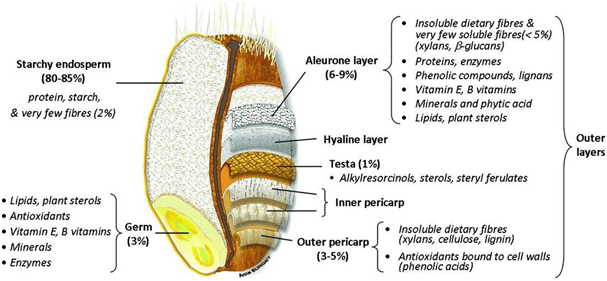Dr. Sharad Durge
PhD – Animal Nutritionist – PAN India
Sapience Agribusiness Consulting LLP
A chicken has a very simple digestive system. The chicken digestive system comprises the beak, mouth, oesophagus, crop, proventriculus, gizzard, small intestine, colon and cloaca. The digestive system, the salivary gland, the liver, and the pancreas help digest the food, and the residual wastes are eliminated from the body. The digestive system is responsible for ingesting food, its breakdown into its constituent molecules and absorption into the bloodstream, and waste elimination. Since the chicken has a simple digestive system, the diet must be high quality and easily digestible to attain optimum and productive performance.
During digestion, the enzyme amylase, produced by the salivary and oesophageal glands, breaks down the starch carbohydrates. However, the amount of enzyme action at this stage is minimal. The first major enzyme activity occurs in the proventriculus and the gizzard. The secretions of the proventriculus (glandular stomach) include hydrochloric acid to lower the pH of the system and the food mixture, the enzyme pepsin that acts on protein, and the hormone gastrin that stimulates the production and release of gastric juice in the proventriculus and pancreatic juice from the pancreas. The gizzard is a very powerful organ which physically breaks the food particles into smaller sizes to make the work of the enzymes easier. At the same time, the enzymes previously released into the food with the saliva and by the proventriculus are thoroughly mixed into the food, improving their ability to carry out their work. The enzymes amylase and pepsin act on starch and simple protein to break them down into simpler proteins. However, there is a limitation on the production of these enzymes in the body.
When food enters the duodenum, pancreatic juice and bile from the liver enter via ducts located at the distal end of the duodenum at about the junction of the duodenum and the jejunum. However, because of the backflow of pancreatic juice and bile towards the gizzard, the actions of these secretions start earlier in the digestive process than would be expected by their entry point to the small intestine. Another effect of this secretion is an increase in the intestinal contents’ pH in the duodenum’s latter half, from strong to weak acid. As a result, most of the starch and varied amounts of protein and lipase are digested during this digestion process. In contrast, many other components like non-starch polysaccharides (NSP), complex proteins, lipids and phytic phosphorus are excreted undigested due to a lack of enzymes for their digestion.
The chicken’s dietary energy and protein components are derived from various crop seeds. Plants produce seeds for the reproduction and propagation of their species. During seed production, due care is taken to protect the germ from external pests and changing climate.

Fig. 1. Composition of seed. PC: Surget and Barron (2005)
The germ (3%) and endosperm (80%) are protected by many insoluble fibrous layers aleurone layer (6-9%), Hyaline layer, testa (1%), inner pericarp and outer pericarp (3-5%). Most fibrous layers contain NSPs (6-33%) like xylans, beta-glucans, mannans, pectins, cellulose, phytic acid, vitamins, minerals, lipids, and phenolic acids.
Raw materials for poultry feed are purchased on a weight basis. When seeds are processed to make poultry feed, NSPs and other complex materials remain. NSPs and other nutritional complexes do not get digested during digestion and often act as an anti-nutritional factor in the system. NSPs soak water in the intestine and increase the viscosity of digesta. This viscous material forms a jelly-like material and encapsulates other nutrients like Protein, Mineral, and Vitamins, making them unavailable for enzymatic digestion and absorption. Unabsorbed material is excreted out and pollutes the environment. This way, the dry matter gets wasted, and ultimately, money is wasted.
Species-specific enzymes are insufficient to utilise feed raw materials’ potential fully. As a result, raw material components like NSPs and phytic acid go unutilised, and potential digestible proteins and lipids are underutilised due to lower levels of enzymes and individual variability in enzyme production.
Supplementing exogenous enzymes improves nutrient digestibility (Lei et al., 2017). Exogenous enzymes like Cellulase, Xylanase, Mannanase, Beta-Glucanase, Pectinase, and Phytase helped utilise unutilised NSPs and phytic acid. At the same time, supplementation of amylase and multi-protease helped realise maximum utilisation of starch and protein. There are many commercial enzymes available in the market with different combinations. Some contain Amylase, Cellulase, Glucanase, Mannanase, Pectinase, Xylanase, Phytase, Protease, Lipase, and probiotics like Bacillus Coagulance. Combining many enzymes is a better option for exploring the potential of raw materials, even at lower quality. Moreover, adding probiotics and systemic enzymes helps better nutrient absorption and performance.
The utilisation of exogenous enzymes contributes to the nutrient composition and availability in the final feed. Therefore, feed costs can be optimised using the nutrient availability matrix value. Exogenous enzymes are a boon to the feed industry in the current scenario of rising raw material prices. Using exogenous enzymes in feed helps achieve better FCR, uniformity in the flock, improved health, better use of cheap feed ingredients, and reduced feed cost.